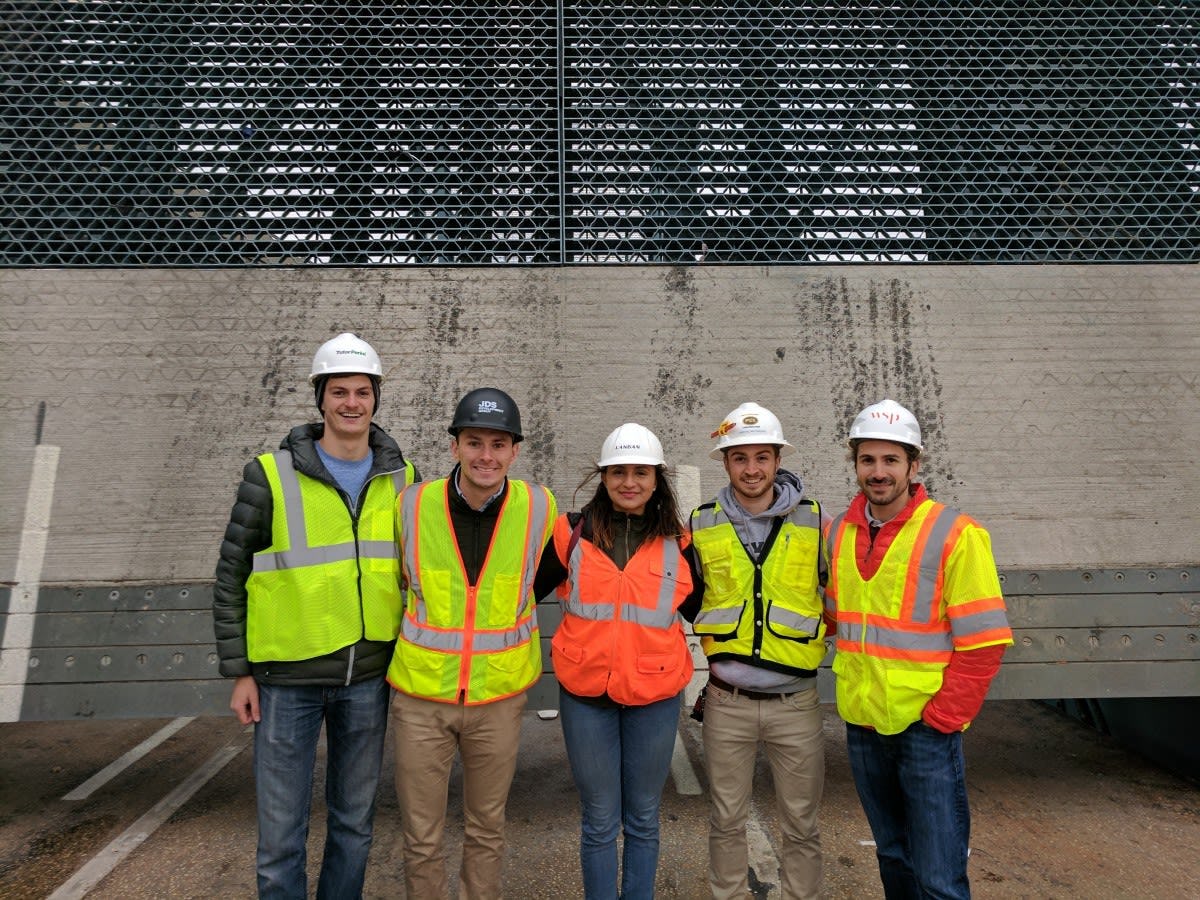How One Senior Design Team Plans to Turn the Mathis Bridge Into the High Line
There will be 140 senior design projects on display at Stevens Institute of Technology’s Annual Innovation Expo. Only one will exhibit a large-scale bridge rehabilitation.
Four civil engineering seniors Yonaida Brito, Taylor Burd, Matthew Di Marco and Nicholas Zickgraf make up the Bridgeworks design team. Sponsored by WSP, the team was charged to create a solution for the aging, deteriorating structure of the Route 37 Mathis Bridge spanning Barnegat Bay in Ocean County, New Jersey.
While the bridge is still open to vehicular traffic, it is structurally deficient. That means it may become unsafe if no actions are taken to fix its structure. That’s not an uncommon assessment for a bridge in the United States: as of 2017, nearly four in ten bridges are more than 50 years old, with ten percent of them being structurally deficient.
But where most people see deficiency, the Bridgeworks team sees potential. Their solution? Designing a new traffic bridge while repurposing the old one into a shared-use path, creating a pedestrian destination similar to New York City’s High Line.
They hope their design will set a precedent for other, similar projects across the country.
Saving Money, Creating Opportunities
"WSP and the New Jersey Department of Transportation went with the decision to rehabilitate the Mathis Bridge by replacing structural components, like the bearings and bridge deck," says Brito. "After analyzing the various alternatives possible, we came up with a better solution."
The pedestrian destination the crew designed provides local communities with multiple recreational and business opportunities, as well as safe access across the Barnegat Bay. Cyclists and dog-walkers alike would have a new way to travel separately from dangerous traffic.
The team says that creating this path was actually a financial decision.
"It costs money to demolish buildings, bridges or any other structure," says Burd. "Instead, we decided to use it solely for pedestrians, even designing public recreational spaces so it could serve as a venue for town events. We decided not to spend money throwing something away that still has usable life," says Burd.
In order to do that, the team gave themselves a crash course in everything related to bridge design.
"This is all new to us," says Zickgraf. "None of us ever took a bridge design class. Our advisor, Steve Esposito, was a fantastic resource for us."
The team also learned from each other. "I learned a lot from my design team," says Di Marco, "especially from Taylor. He brought a whole other level of expertise from both the design and structural knowledge standpoint. I’d say he’s taught me a lot about the mathematics and physics behind buildings."
Daunting as that learning curve was, the team persevered. "Stevens has always encouraged us to be innovative and entrepreneurial," explains Di Marco. "We always look for something we can tweak to make it better. It’s exciting to know that we’re doing something different…. and potentially improve people’s lives."
"I knew I wanted to work on a bridge," says Brito. "I’ve always handled the construction management side of things and I wanted to work on design. I’m glad I finally did because it reinforced my decision to pursue construction management professionally. I don’t really like design," she laughs.
The students will display detailed design specs and engineering drawings of the final project at the Innovation Expo.
Building Stronger, Better Engineers
All four teammates are enrolled in Stevens Cooperative Education program where they gained real-world experience. "The experience we all acquired through our internships has been extremely helpful to our senior design project," says Brito, "Being exposed to [professional] environments and bringing that experience back made our work special and more real."
While WSP has responded positively to their design, the Bridgeworks team is eager to present their work to their colleagues. "So far, the idea we came up with has gotten a lot of good feedback," says Zickgraf, "but being able to design a bridge, not having known how to prior to this, is very rewarding."
See this project and many others at the 2018 Stevens Innovation Expo on May 2.


